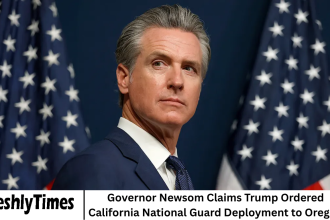Global Urgency and Objectives
The 2025 United Nations Climate Summit has brought together world leaders, policymakers, and environmental activists to address the escalating climate crisis. Hosted in Geneva, Switzerland, the summit has been marked by high-stakes negotiations, ambitious pledges, and debates over accountability, finance, and global cooperation. As temperatures rise, extreme weather events increase, and ecological degradation accelerates, the international community faces mounting pressure to deliver tangible solutions that balance economic growth with environmental preservation.
Carbon Emission Commitments
One of the central discussions at the summit revolves around reducing global carbon emissions. Countries have been asked to strengthen commitments under the Paris Agreement, with particular emphasis on limiting global warming to 1.5 degrees Celsius above pre-industrial levels. Developed nations are being urged to provide financial support to developing countries, enabling them to transition to renewable energy, adapt infrastructure, and protect vulnerable communities from climate impacts.
Major Participants and Negotiations
The summit has seen notable participation from major emitters, including the United States, China, India, and the European Union. Negotiators are focusing on implementing binding frameworks for carbon reduction, establishing accountability mechanisms, and promoting technology transfer. While optimism prevails in some quarters, disagreements over responsibility, funding, and national interests have led to intense debates throughout the summit.
Activism and Public Pressure
Climate activists and civil society groups have made their voices heard, staging demonstrations, holding side events, and engaging in media campaigns to highlight the urgency of action. Groups such as Fridays for Future and Greenpeace emphasize that incremental measures are insufficient, advocating for systemic changes in energy production, agriculture, and industrial processes. Their presence underscores the growing influence of public pressure in shaping international policy.
Renewable Energy and Clean Technology
Renewable energy transitions have been a key topic of discussion. Advances in solar, wind, hydropower, and emerging technologies such as green hydrogen are being promoted as solutions to reduce reliance on fossil fuels. Investment in clean energy infrastructure is considered essential for long-term economic resilience, energy security, and environmental protection. Experts highlight that nations investing now in green technology will gain strategic advantages in future global markets.
Energy Efficiency and Innovation
Energy efficiency and innovation are also being addressed. Leaders discussed strategies to improve building standards, industrial processes, and transportation systems to reduce energy consumption. Smart grids, energy storage, and electric mobility are central to these plans, reflecting a holistic approach to climate mitigation. Governments are encouraged to adopt policies that incentivize efficiency, innovation, and sustainable practices across all sectors.
Economic and Financial Considerations
Economic considerations remain critical. Some nations express concerns about balancing climate commitments with economic growth, job creation, and energy access. Transitioning to a green economy requires careful planning to avoid disruptions, ensure equitable opportunities, and mitigate social and economic impacts. Policymakers are exploring mechanisms such as green bonds, climate funds, and public-private partnerships to finance the transition sustainably.
Geopolitics and Climate Diplomacy
Geopolitics intersect with climate diplomacy. Energy dependencies, trade relations, and strategic alliances influence negotiations, making the summit a forum for both environmental and political maneuvering. Leaders must navigate complex dynamics, balancing domestic priorities with international obligations. The summit provides an opportunity to strengthen global cooperation, but success depends on trust, transparency, and willingness to compromise.
Technological Innovation in Climate Action
Technological innovation has been highlighted as a tool to address the climate crisis. AI-driven climate models, satellite monitoring, and predictive analytics can inform policy, optimize resource use, and track emissions. These technologies allow countries to make data-driven decisions, monitor progress, and adjust strategies in real time, enhancing accountability and efficiency.
Adaptation and Resilience
The summit has also focused on climate adaptation. Vulnerable regions, including island nations, arid zones, and flood-prone areas, require support to cope with rising sea levels, droughts, and extreme weather events. Funding, knowledge transfer, and infrastructure development are central to ensuring resilience, protecting communities, and reducing future economic losses. Leaders are encouraged to prioritize these measures alongside emission reduction commitments.
Environmental Justice and Equity
Environmental justice has emerged as a crucial theme. Policymakers are urged to consider the disproportionate impact of climate change on marginalized communities, indigenous populations, and low-income nations. Equitable policies that address both mitigation and adaptation are necessary to ensure that climate action benefits all and does not exacerbate existing inequalities.
Progress and Future Implementation
Despite differences, progress has been made. Several nations have announced new commitments to achieve net-zero emissions by 2050, phase out coal, and increase investment in renewable energy. Collaborative initiatives on reforestation, ocean protection, and carbon capture technologies were launched, signaling a willingness to innovate and cooperate. Analysts note that while summit agreements are important, their success depends on implementation, monitoring, and enforcement. International cooperation, transparency, and continued public pressure are essential to ensure that commitments translate into meaningful outcomes.
FAQs
What is the goal of the 2025 UN Climate Summit?
To strengthen global commitments under the Paris Agreement, reduce carbon emissions, and support climate adaptation and mitigation efforts.
Which countries are key players in the summit?
Major emitters such as the United States, China, India, and members of the European Union are central to negotiations.
What role do civil society groups play?
Groups like Fridays for Future and Greenpeace advocate for stronger measures, hold governments accountable, and raise public awareness.
How does technology aid climate action?
AI, satellite monitoring, and predictive analytics help optimize resource use, track emissions, and inform policy decisions.
What challenges affect summit outcomes?
Economic concerns, geopolitical dynamics, equitable implementation, and enforcement of commitments are major challenges.
Conclusion
The 2025 UN Climate Summit underscores the urgency of coordinated global action to combat climate change. With leaders, experts, and activists converging on Geneva, the world faces both immense challenges and unprecedented opportunities to accelerate renewable energy adoption, enhance resilience, and foster sustainable development.
The summit’s outcomes will shape international policy, economic strategy, and environmental protection for years to come. Effective implementation, global cooperation, and technological innovation are crucial to translating promises into meaningful change, ensuring that nations can meet the pressing demands of a warming planet while securing a sustainable and equitable future.














